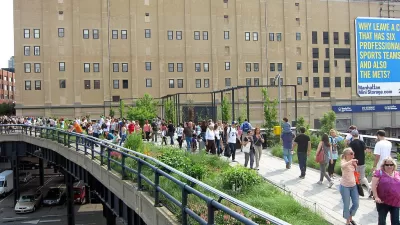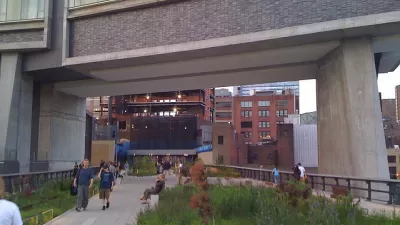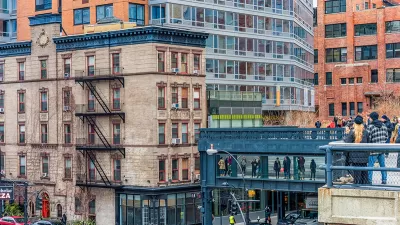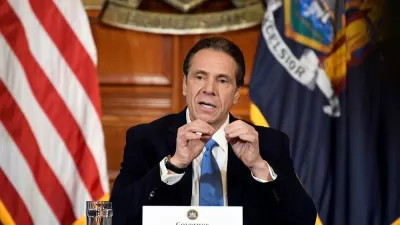One of Manhattan's most popular tourist attractions, the linear, elevated urban park that existed as a freight rail line as late as 1980, is also a means of commuting to work - but only for walkers as cycling is prohibited along the High Line.

Calling it the High Line's "best-kept secret", Matt Flegenheimer writes, "With no traffic lights, no cars or bikes (prohibited under park rules) and few tourists during the morning rush, the raised stretch has come to attract commuters — not because it is picturesque, but because it is faster."
Flegenheimer timed the High Line commute to walking the same distance at street level, from Gansevoort St. to West 30th, complete with stair-walking to get to/from the elevated park (though elevators do exist). The High Line won by five minutes.
Some Chelsea residents began commuting almost immediately after the park opened, said Robert Hammond, a co-founder of Friends of the High Line. But the number has accelerated since the introduction of Section Two [in December, 2010], he said, with the pathway extended nearer to Midtown residents who work at Google or other companies in Chelsea Market.
The walkway even attracts commuters from outside the area, serving a multi-modal function.
Jane Potenzo, 63, of Port Washington, N.Y., said she typically walked the High Line to reach Chelsea after taking the Long Island Rail Road to Penn Station, hoping to spot foliage coming into or out of bloom. “It’s the best part of my day,” she said.
Unlike a real highway though, the commuters must share the 'roadway' with joggers, parents pushing strollers, picture-takers, and the queues at the coffee-stations along the route.
FULL STORY: High Line’s Best-Kept Secret: It’s a Fast Commute

Maui's Vacation Rental Debate Turns Ugly
Verbal attacks, misinformation campaigns and fistfights plague a high-stakes debate to convert thousands of vacation rentals into long-term housing.

Planetizen Federal Action Tracker
A weekly monitor of how Trump’s orders and actions are impacting planners and planning in America.

Chicago’s Ghost Rails
Just beneath the surface of the modern city lie the remnants of its expansive early 20th-century streetcar system.

Bend, Oregon Zoning Reforms Prioritize Small-Scale Housing
The city altered its zoning code to allow multi-family housing and eliminated parking mandates citywide.

Amtrak Cutting Jobs, Funding to High-Speed Rail
The agency plans to cut 10 percent of its workforce and has confirmed it will not fund new high-speed rail projects.

LA Denies Basic Services to Unhoused Residents
The city has repeatedly failed to respond to requests for trash pickup at encampment sites, and eliminated a program that provided mobile showers and toilets.
Urban Design for Planners 1: Software Tools
This six-course series explores essential urban design concepts using open source software and equips planners with the tools they need to participate fully in the urban design process.
Planning for Universal Design
Learn the tools for implementing Universal Design in planning regulations.
planning NEXT
Appalachian Highlands Housing Partners
Mpact (founded as Rail~Volution)
City of Camden Redevelopment Agency
City of Astoria
City of Portland
City of Laramie





























